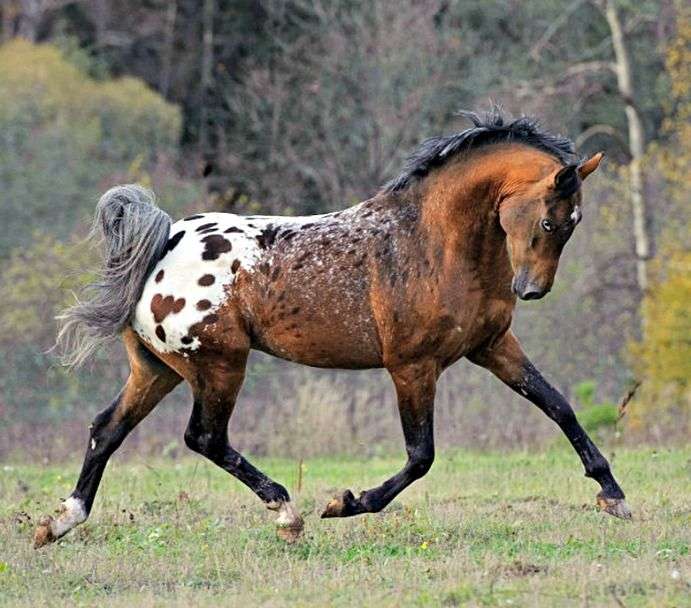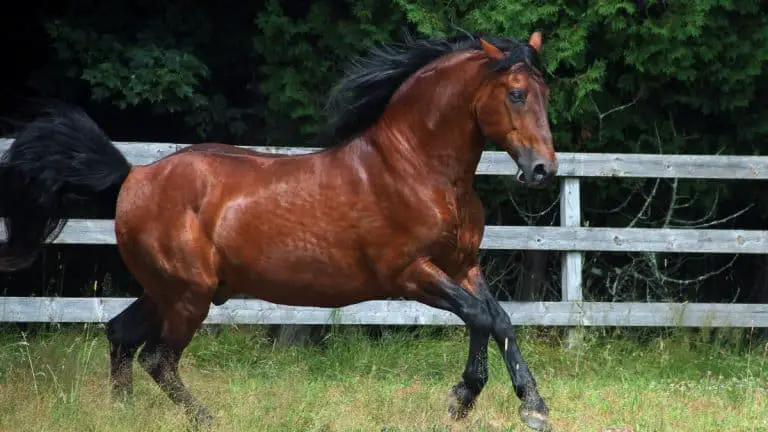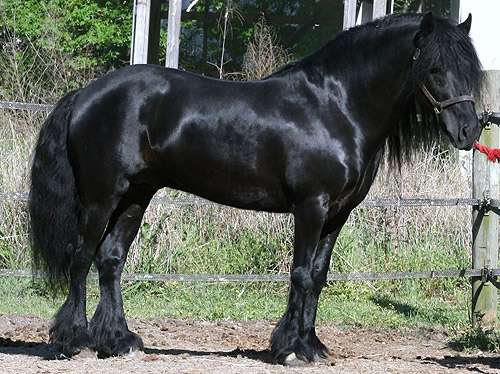
Size
1.3 – 1.6 meters.
Color
White, black, and bay are just a few of the many foundation colors that the Tiger Horse can have. They have spotted, leopard-like patterns.
Physical Attributes
Tiger horses are spotted, gaited horses that resemble Appaloosas in terms of coat color. The tiger horse may move in a variety of ambling gaits, such as the diagonal fox trot, stepping pace, running walk, and numerous lateral gaits known as the “glider gait” or Indian shuffle. Registered horses must display flat-shod gaits without the use of any artificial assistance.
Characteristics and Genetics
An American horse breed called the Tiger Horse has Chinese heritage. The “Heavenly Type” and the “Royalty Type” are the two varieties of tiger horses. Even among these two varieties, there are differences in conformation because the tiger horse breed is continually evolving. The profile of the tiger horse can be either straight or convex. Breeders aim for the convex profile to predominate since it represents the breed’s Spanish origin. The Tiger Horse Association advises breeders to exclusively use excellent Gliders and Royalty horses for their next breeding experiments. Heavenly types with glider gaits can only be registered as of 2011 if at least one parent is a registered Royalty type.
Reproduction and Uses
The tiger horse breed was created for its distinct leopard-like coats and distinctive “amble” or “shuffle” movement. They are frequently used as companion animals and informal riding horses today.
Tiger horses are great for novices because of their calm disposition and friendliness, and they frequently participate in dressage competitions.
As Pet

Nutrition and Diet
There are no particular dietary requirements or restrictions for tiger horses as a breed. These horses, which are generally healthy animals, are usually fed a conventional diet of hay and grain. Concerning a tiger horse’s particular dietary requirements, a person should consult with a veterinarian personally.
Typical Health and Behavior Issues
Generally speaking, tiger horses are considered to be healthy animals with no known common hereditary health or behavioral issues specific to the breed. In addition to the required immunizations and deworming, every horse should have a comprehensive annual inspection from their veterinarian. Discuss the matter with the veterinarian so that they can provide the owner with the best guidance if the owner is worried about the horse’s health.
Grooming
Tiger horses need frequent grooming for both cosmetic and health reasons, just like any other breed of horse. When bathing a tiger horse, choose a shampoo that won’t be harsh on their skin. Regular brushing of coats and hoof cleaning are both recommended.
Tiger horses’ manes and tails may vary, with some having long, thick manes and tails while others have sparse, short ones; nevertheless, they should never be artificial in any form. The washing, conditioning, and brushing of the mane and tail should be done according to the demands of the particular horse.
A farrier will need to trim and inspect a tiger horse’s feet on a regular basis. Its back hooves should be slightly smaller and its front hooves should be rounder.
Table





